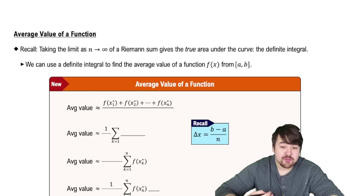Finding Critical Points
In Exercises 41–50, determine all critical points and all domain endpoints for each function.
g(x) = √(2x − x²)
 Verified step by step guidance
Verified step by step guidance Verified video answer for a similar problem:
Verified video answer for a similar problem:



 7:32m
7:32mMaster Determining Where a Function is Increasing & Decreasing with a bite sized video explanation from Patrick
Start learning